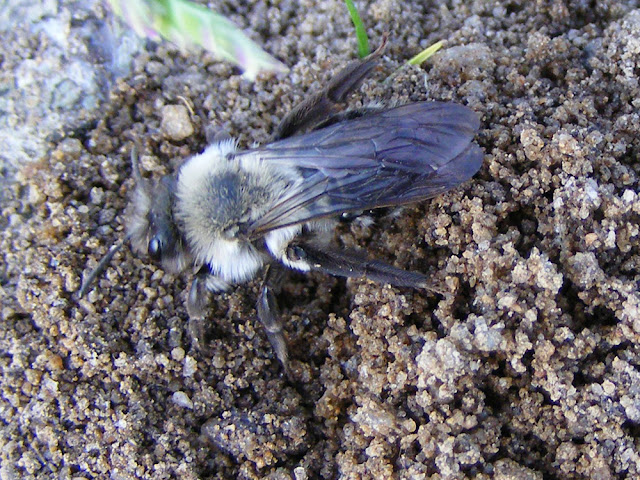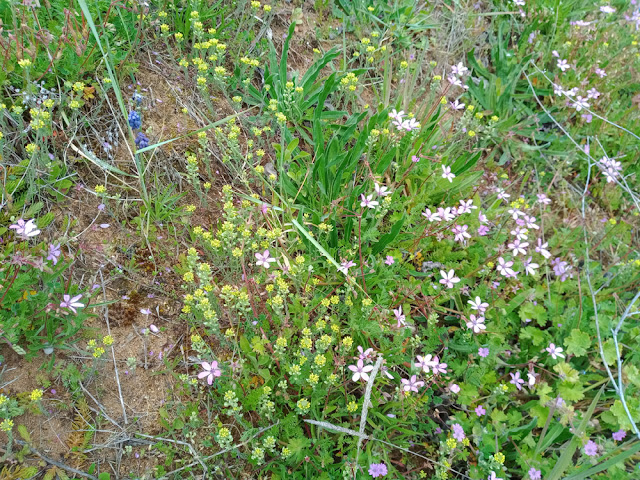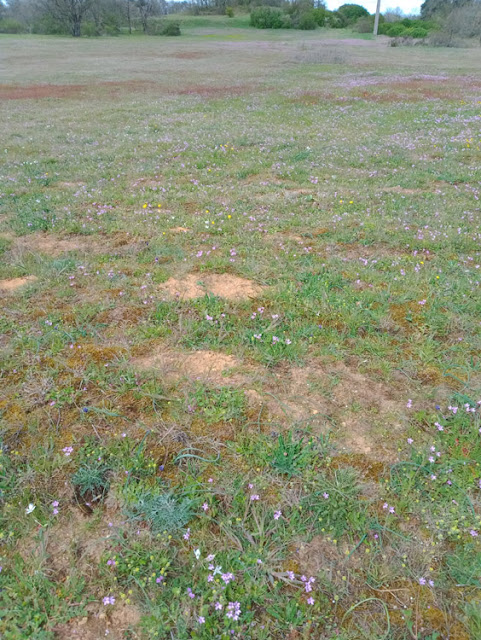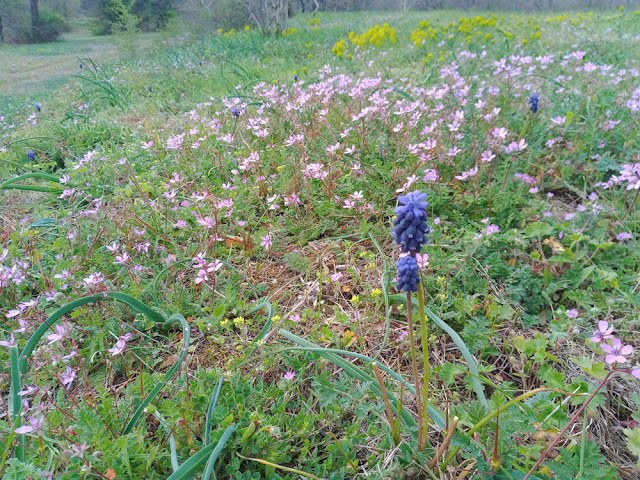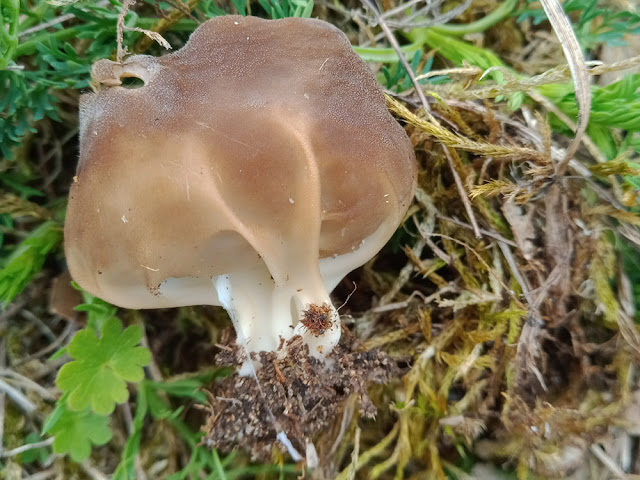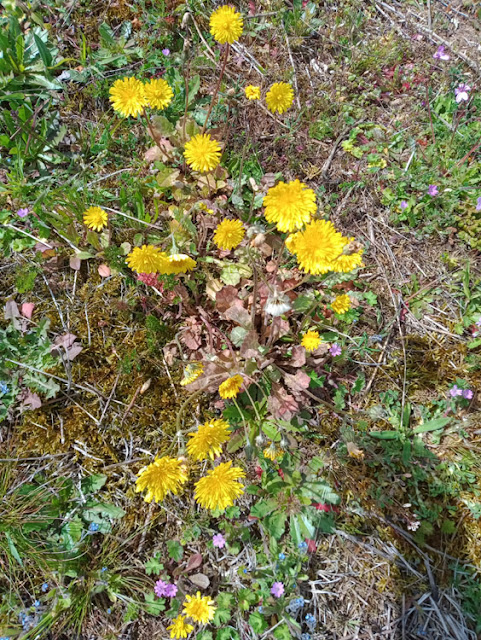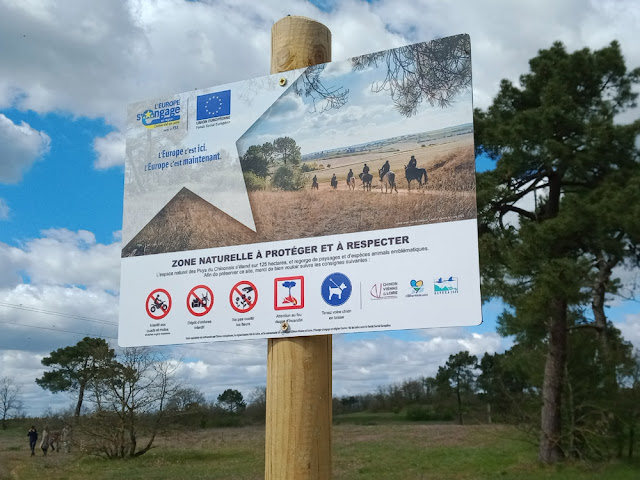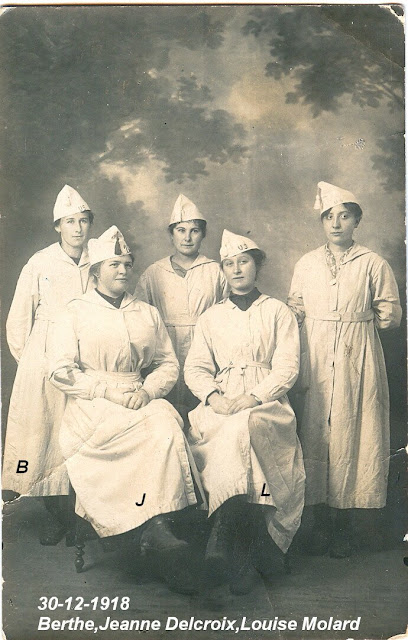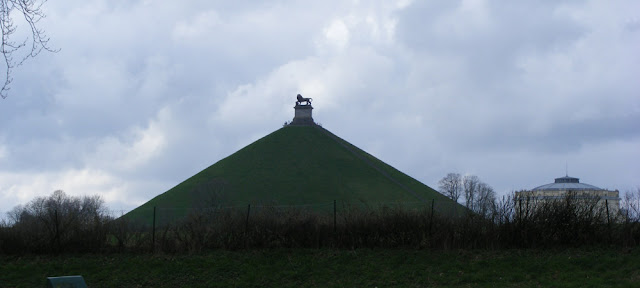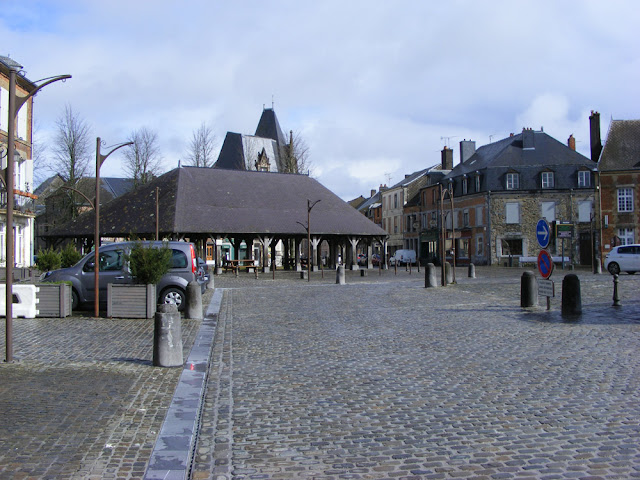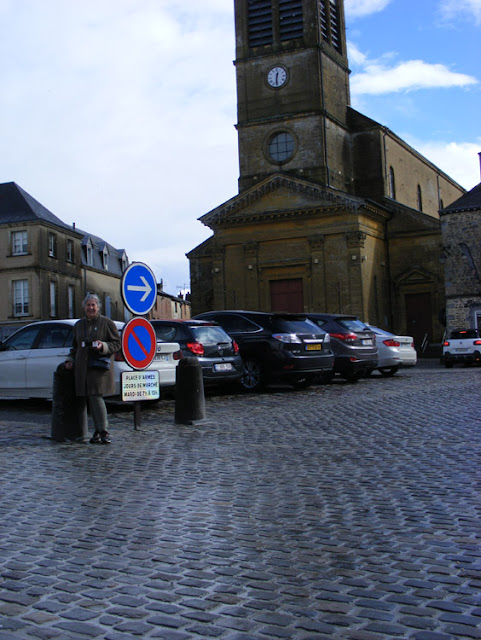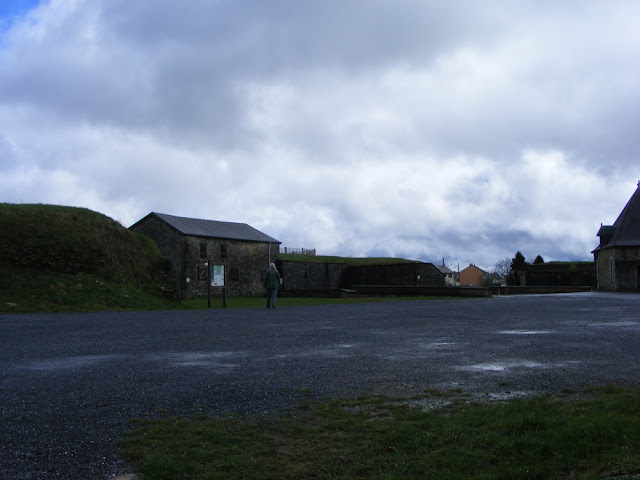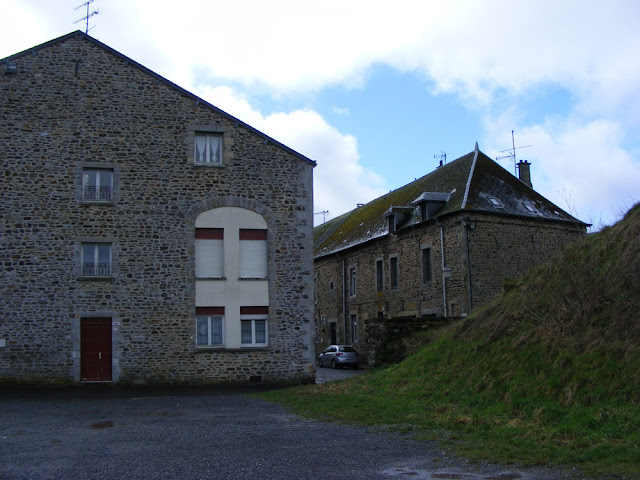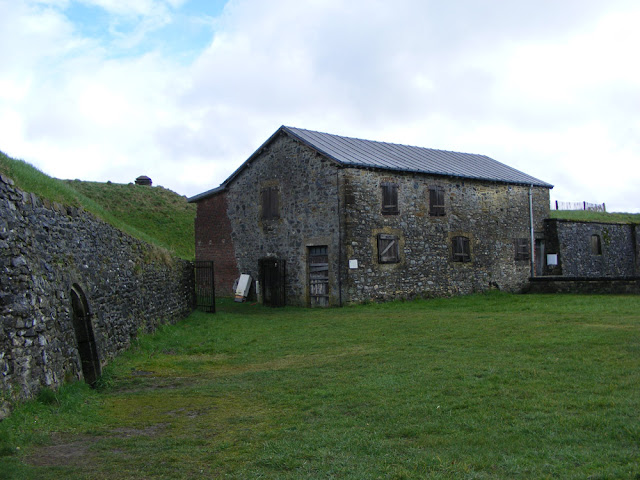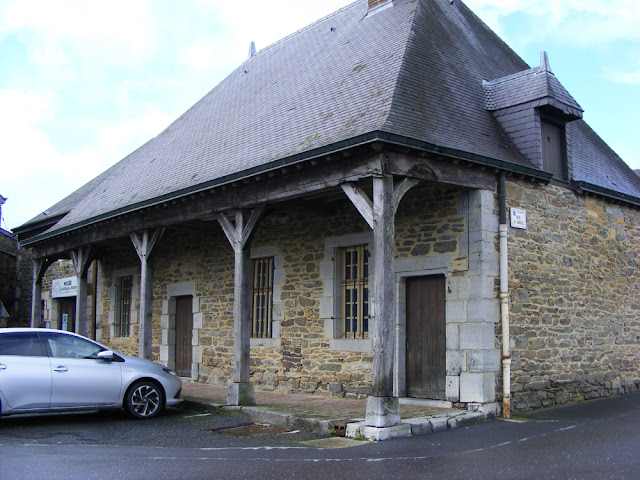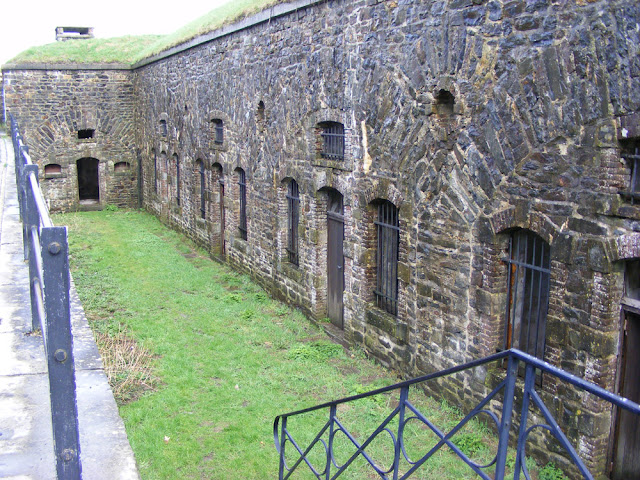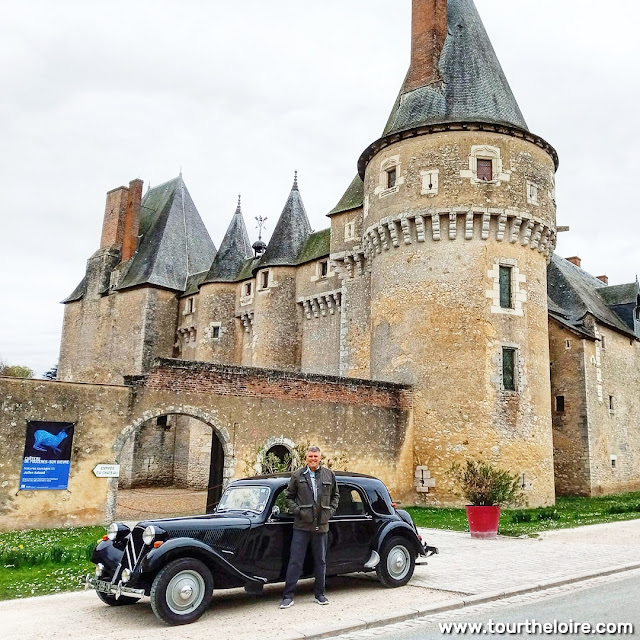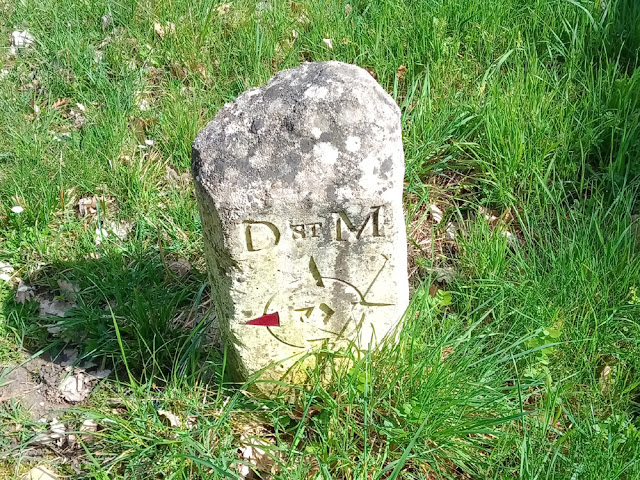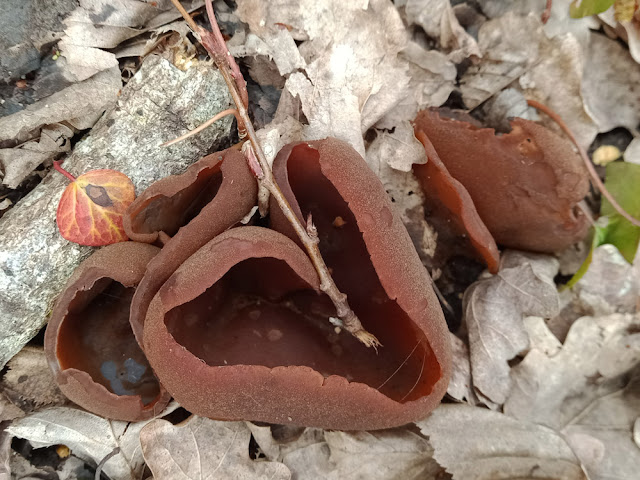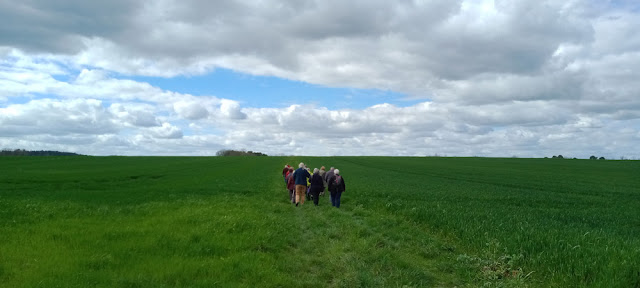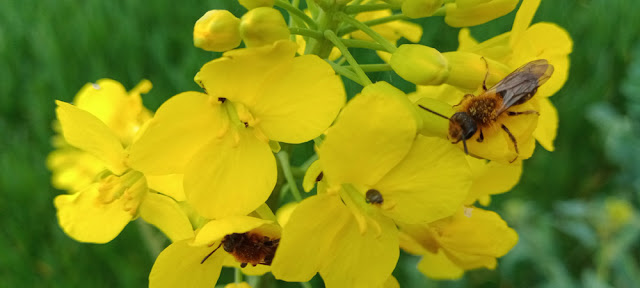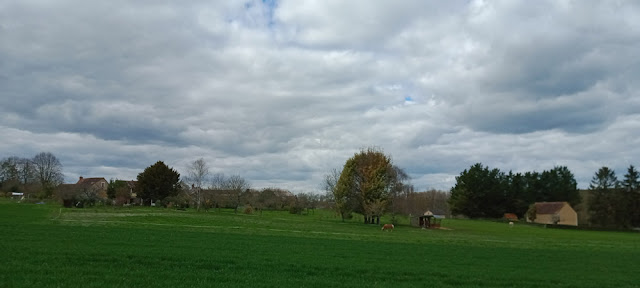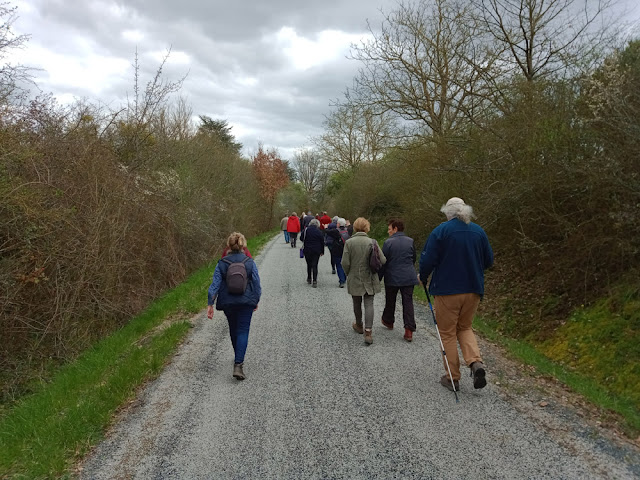 |
| A colony of Grey-backed Mining Bee nest holes. |
One day in early April we had some free time in Amboise and parked up on the Ile d'or, the island in the middle of the Loire River, with the best view of the Chateau Royal d'Amboise. On this occasion though what caught my attention was the activity of a large colony of bees flying around just above the ground in front of where the car was parked.
 |
| Female Grey-backed Mining Bee. (All the photos are of females.) |
They turned out to be Grey-backed Mining Bee Andrena vaga, as confirmed by one of the very generous experts in the specialist European Wild Bee Facebook group (thanks Nicolas). The soil on the island is compacted sand, ideal for this species, and being on the river there is plenty of their preferred food, willow pollen.
 |
| A typical nest. |
Grey-backed Mining Bees have a wide distribution in Europe and Asia. They generally live in damp habitats, such as river banks and damp grassland.
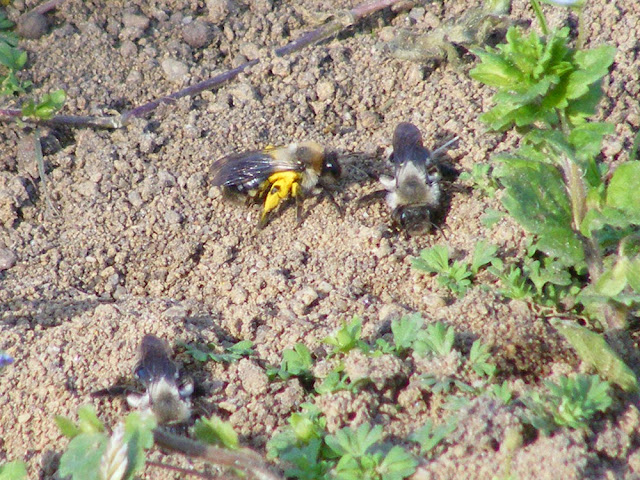 |
| The bee at top left is partially covered in pollen. |
They are solitary bees, with each female living in a nest she has dug in the soil, but there may be dozens of others in the vicinity. When she leaves the nest she will usually carefully cover the entrance with sand. This behaviour, common amongst all the Andrena spp mining bees, probably protects her eggs from parasites and predators. It could also be to maintain a constant temperature inside the nest. The nest is not covered on days when the temperature is very high.
 |
| This individual is a sort of buffy grey, which is not uncommon. |
Females can sometimes dig false nests, not far from their real one, probably to fool parasites into looking in the wrong place. Occasionally the fake nest fools even its creator and bees will return from foraging and enter their false nest before realising their mistake and moving to the real one. This technique of fake nest holes seems to be particularly effective against Lathbury's Nomad Bee Nomada lathburiana, a parasitic bee that specialises in preying on Grey-backed Mining Bees. There was a Nomada sp bee, probably Lathbury's, lurking about while I was photographing. As well as Lathbury's Nomad Bee, they are also parasitised by oil beetles Meloe spp.
Grey-backed Mining Bees are specialist feeders on willow pollen, but they have been observed occasionally feeding on other plants. It is thought that they find their sources of pollen by scent. Research shows that their antennae react to active scent compounds in willow pollen that Honey Bees Apis mellifera do not react to.
They commonly nest in company with the Vernal Colletes bee Colletes cunicularis, and that was the case in Amboise, with a few Vernal Colletes nesting on the fringes of the big Grey-backed Mining Bee colony.


